#parasitism /
Explore tagged Tumblr posts
Text

we'll never be rid of each other
#i REALLY hope this is clear enough#ALSO. MY TABLET ARRIVED EARLY!!!!#the silt verses#tsv#the silt verses fanart#tsv fanart#brother faulkner#sister carpenter#twin mouths#every universe#mistletoe#parasitism#comic#my comic#art#my art#digital art#my digital art#flat colour#hatching
730 notes
·
View notes
Text






Heteroplacidium fusculum
You might notice something weird about H. fusculum. See how it's always closely surrounded by other crustose lichens? Well that's because it's lichenicolous, meaning it parasitizes other lichens to get its start in life--namely Aspicilia calcarea. What's the benefit of starting out life on another lichen? Well it means that instead of capturing and cultivating its own photobiont cells, it can just steal the energy and even the photobiont cells of the other lichen. This process is called cleptobiosis, literally stealing the biotic partner of another organism. This ultimately leads to the death of A. calcarea, and then H. fusculum continues on living with the captured photobiont. Isn't nature fun?
images: source
info: source | source
#lichen#lichens#lichenology#lichenologist#mycology#ecology#biology#fungi#fungus#nature#the natural world#beautiful nature#weird nature#horrifying nature#symbiosis#parasitism#symbiotic organisms#algae#I'm lichen it#trypo#trypophobia#Heteroplacidium fusculum#Heteroplacidium#lichen a day#daily lichen post#lichen subscribe
653 notes
·
View notes
Text

Here's a parasitic plant that smells like a rotting corpse: jackal food (Hydnora africana)! Unlike many plants, which use chlorophyll and photosynthesis to derive nutrients from the Sun, this species attaches itself to host plants instead, siphoning off their nutrients. Found in arid parts of southern Africa, including South Africa and Namibia, the stench of the jackal food’s fruit attracts a variety of animals including jackals, porcupines, and moles. What does it taste like? Its flavor and texture have been compared to that of a potato.
Photo: alexlansdowne, CC BY-NC 4.0, iNaturalist
960 notes
·
View notes
Text
Here Are My Top 10 Favourite Ants
(Updated due to public outcry and political pressure.)
No. 10 - Yellow Crazy Ants

These guys are on a list of "one hundred of the world's worst invasive species" formulated by the International Union for Conservation of Nature (IUCN), having invaded ecosystems from Hawaii to the Seychelles.
But don't hate just because they are awesome at establishing themselves in a new habitat due to their aggression toward other ant species, lack of aggression toward members of their own species, efficient recruitment, and large colony size. Respect the hustle!
No. 9 - Paraponera Clavata
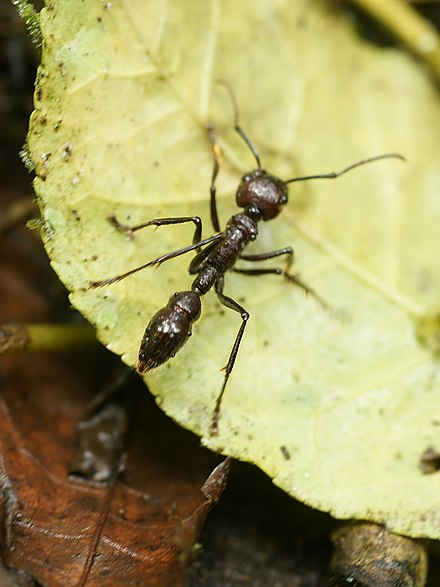
Also known as the "bullet ant," "the one wounding deeply," or "24-hour ant", referring to the full day of pain that follows being stung.
This ant's sting currently ranks the highest of all insect stings on Justin O. Schmidt's informal sting pain index, at 4.0+. Some victims compared the pain to that of being shot, (hence the nickname,) with "waves of burning, throbbing, all-consuming pain that continues unabated for up to 24 hours."
Lymphadenopathy, edema, tachycardia, and fresh blood appearing in human victim feces are common symptoms from even a single sting.
Un-fuck-with-able.
No. 8 - Honeypot Ants
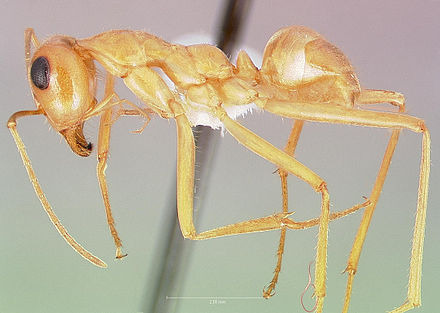
The name honeypot ant comes from the peculiar development of replete workers, whose abdomens become so swollen with food that they are used by the rest of the colony as living food storage. They are "drained" during famine, usually the wintertime, to sustain the colony, leaving them as "flaccid depletes."
Disgusting. 10/10
When a replete worker fills with food, a portion of her digestive tract swells and displaces other abdominal organs. It can expand about four to five times its normal linear dimension when they are fully engorged with food.
I can relate. I have eaten pasta in such quantities to displace my own organs many times.
No. 7 - Red Imported Fire Ants

Though South American in origin, the red imported fire ant has been accidentally introduced to many other parts of the world.
More than 14 million people are stung by them in the United States annually. Most victims experience intense burning and swelling, followed by the formation of sterile pustules, which may remain for several days. Up to 6% of people may suffer from anaphylaxis. More than 80 deaths have been recorded from red imported fire ant attacks.
These ants thrive in urban areas. Nests can be built under pavements and foundations. This means not only can they damage or destroy individual structures, but red imported fire ants can have an affect on broader infrastructure, damaging land, business and property values. In agriculture, they can damage crops and machinery, and threaten pastures. They also pose a threat to animals and livestock, capable of inflicting serious injury or death, especially on young, weak, or sick animals.
With annual damages estimated in the billions of dollars, these ants are considered the second worst thing to arrive on North American soil since 1492.
No. 6 - Black Garden Ants

When building their colony, these ants will structure it so as to inhibit the transmission of different contagions. Different communities within the colony are segregated by a limited number of connective nodes, allowing for greater protection of vulnerable hive members, such as larvae and pupae.
A trait I could only wish other species performed so well.
No. 5 - Pharaoh Ants

These ants utilize three types of pheromones. One is a long-lasting attractive chemical that is used to build a trail network. It remains detectable even if the ants do not use the trail for several days.
The second pheromone is also attractive, but will decay to imperceptible amounts in a matter of minutes without reapplication. This pheromone is useful in marking food sources as these are unpredictable and liable to change quickly, so not worth the longer-lasting pheremone.
The third pheromone is a repellant. If an individual finds an unprofitable area with little food or significant danger, it will release this repellant pheromone, which will warn others and cause them to look elsewhere. While positive pheromones indicating lucrative foraging sites are very common in social insects, the pharaoh ant's negative pheromone is highly unusual and pharaoh ants were the first species found to employ such a thing.
No. 4 - Argentine Ant

This species is like the Mr. Worldwide of ants. It has established itself in every continent except Antarctica (including many oceanic islands.)
It even has "supercolonies" that extend across hundreds or thousands of kilometers, first reported in California in 2000, then in Europe in 2002, Japan in 2009, and Australia in 2010.
Several subsequent studies used genetic, behavioral, and chemical analyses to show that supercolonies on separate continents actually represent a single global supercolony.
The researchers stated that the "enormous extent of this population is paralleled only by human society."
How can you not admire (and fear) the ambition and the achievement?
No. 3 - Leafcutter Ants
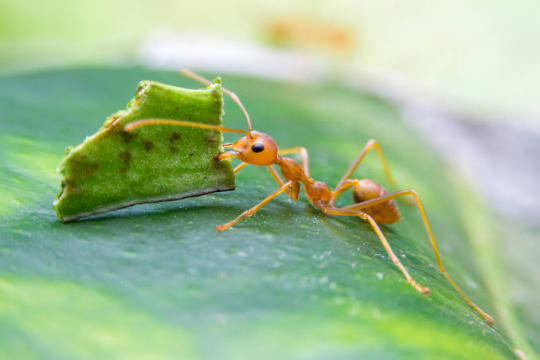
"Leafcutter ants" is a bit of an umbrella term, as it consists of over 45 ant species, but this gang is just so remarkable. Next to humans, leafcutter ants form some of the largest and most complex animal societies on Earth. They are known for their advanced agricultural practices. These ants are not merely foragers but skilled farmers, cultivating their own food by collecting specific kinds of leaf matter in order to produce specialized fungi in their nests.
No. 2 - Formica Fusca

These ants, (sometimes called silky ants or dusky ants,) are fast to learn, and only a single presentation of stimulus is enough for them to form a genuine long-term memory. This formed memory is also resistant to extinction.
Ants of this species can also detect volatile organic compounds emitted by cancer cells. After a 3-trial conditioning, they can differentiate cancer cell lines from healthy ones. They can also differentiate between at least two different cancerous cell lines.
A similar ability to detect human tumours has been shown in more recent studies.
No. 1 - Weaver Ants
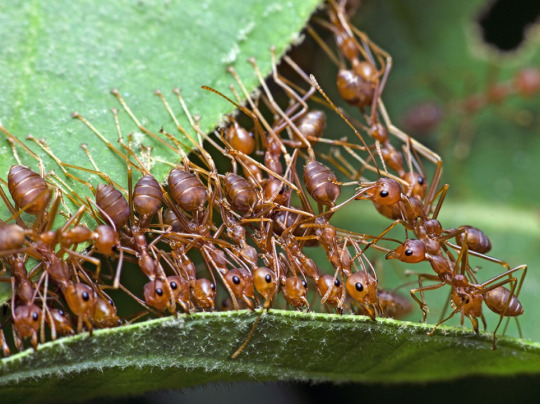
An arboreal species, (i.e. they live in trees,) weaver ants are known for their unique nest building behaviour where workers construct nests by weaving together leaves using larval silk. Colonies can be extremely large consisting of more than a hundred nests spanning numerous trees.
How they sew the leaves together is a remarkable feat of cooperation. Typically, dozens of ants will need to form a chain to first bridge a gap between two leaves, then pull them together so another team can hold them in position whilst yet more ants sew the gap together with silk. But adult ants can't make silk, so they have to use larvae to do it, picking the larvae up and using them like little pots of glue to spin a mat of silk between the two leaves. Altogether, a hundred ants might be involved in the same task. This is a pretty remarkable piece of evolution and a testament to the power of cooperation!

#ants#Myrmecology#bugblr#insectblr#bugs#insects#bug#insect#entomology#ant#antposting#invertebrates#antblr#parasites#parasitism#weaver ant#formica ant#leafcutter#bullet ant#fire ant
162 notes
·
View notes
Text

The rare, parasitic Gnome Plant (Hemitomes congestum)
#artists on tumblr#original photographers#original photography#hiking#pacific northwest#nature#washington#pnw#parasitic plant#parasitism#pink#naturecore#cottagecore#Hemitomes congestum#macro photography#focus stack#goblincore#nikon#orofeaiel
203 notes
·
View notes
Text
Parasitic plant convinces hosts to grow into its own flesh—it's also an extreme example of genome shrinkage
@bogleech I feel you'd be interested in this if you aren't already aware of it.
904 notes
·
View notes
Text

rejected valentine's day card #1
2K notes
·
View notes
Text
THIS IS SO COOL! So animals can get fungal infections, as can plants and even other fungi. We've seen fungi like Cordyceps produce fruiting bodies on insect hosts postmortem. But this is the first known observation of a fruiting body on a live host! And the frog apparently seemed to be in good health otherwise.
It's likely a situation with an opportunistic spore of Mycena landing in a wound or other small vulnerability on the frog's skin, and since amphibians have to stay wet, the fungus had plenty of water. I'm not sure what it's been consuming since Mycena normally is a decomposer of dead plant tissue; maybe dead skin cells and bacteria?
Before people start leaping to conclusions, this is NOT the start of some sort of zombie apocalypse. Mycena and Cordyceps engage with their hosts in very different ways, and neither are anywhere near related to any fungi that parasitize human hosts and which do not cause any sort of altered mental state of that sort. I find it kind of sad when people have to sci-fi a new scientific discovery in order to find it interesting enough to think about, instead of just appreciating how awesome, weird, and scary nature is all on its own.
Regardless, this is a really spectacular find, and we'll see if any other crop up or whether this was one of those once-in-a-lifetime discoveries.
#fungi#fungus#mushrooms#amphibians#herps#frogs#nature#wildlife#animals#ecology#science#scicomm#parasitism#Mycena#Cordyceps#biology#mycology
322 notes
·
View notes
Text
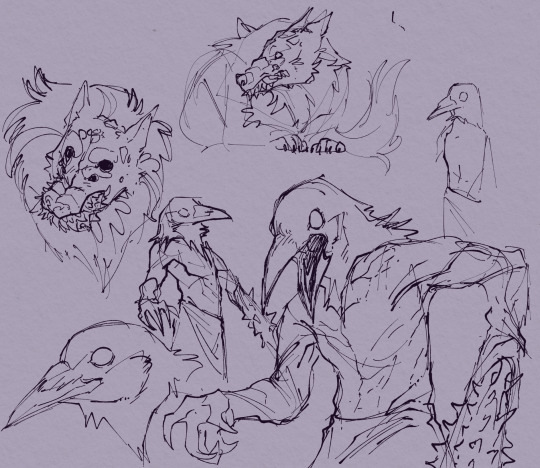

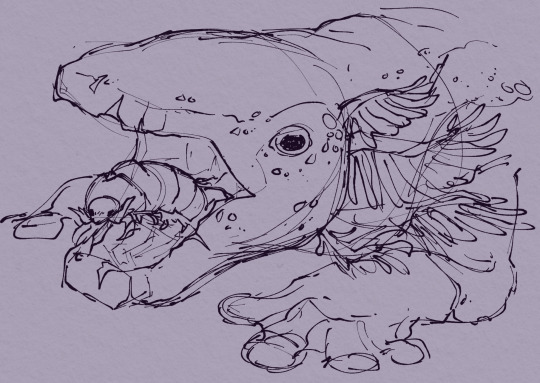
scared and hungie
been watching supereyepatchwolf's streams of this game and loving it. when he was fighting the salmonsnake he never allowed the tongue to extend for its attack, and due to the ridges i thought it was gonna be a tongue-eating louse.. also what's up with the two-headed crow mauler
602 notes
·
View notes
Text

Liver flukes By: Unknown photographer From: Le Grand Fichier du Monde Animal 1975
69 notes
·
View notes
Text

Here's to motherfuckers, and black box medications, here's to holding grudges; got my attention-seeking ideations! 🎵
(So the next time you see raw meat twitching, don't worry, it's safe to eat knowing it's VERY fresh!)
The connections between Mouthwashing and Wrong Organ's other game, How Fish is Made, drive me crazy insane. Or at the very least connections between it and the parasite + "Friend-O."
Like just look at the lyrics to Livin' With It. Consider how the parasite (Jimmy) talks for the fish (Curly) and acts as though they're a team when they're not, and the parasite has eaten the fish's tongue. Think about how Curly's hospital gown almost looks like it's got fish scales on it.
I know I'm not the only one to come to this conclusion it just. It makes me lose it. I'm losing it so much
(the parasite in the drawing is meant to be jimmy) (metaphorically) (if that was not clear) (just in case) (coughs) (kicks a rock)
#bg text is lyrics from livin' with it: ''Killin' time just livin with it. just livin with it. you'll be buried with it''#ok anyway. God drawing anything remotely humanoid is had but i'm Trying !!!!!!#mouthwashing#how fish is made#captain curly#mouthwashing curly#implied jimmy#<- warning tag honestly#parasites#parasitism#blood#clamart#ask to tag
75 notes
·
View notes
Photo
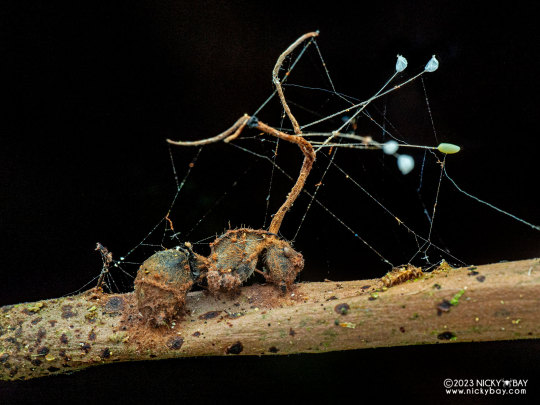
Ant infected with cordyceps fungus featuring lacewing eggs that were deposited on the fungal body - all hatched except one.
Photographed in Singapore by Nicky Bay // Website // Facebook
Shared with permission; do not remove credit or re-post!
Bonus cordyceps photos:
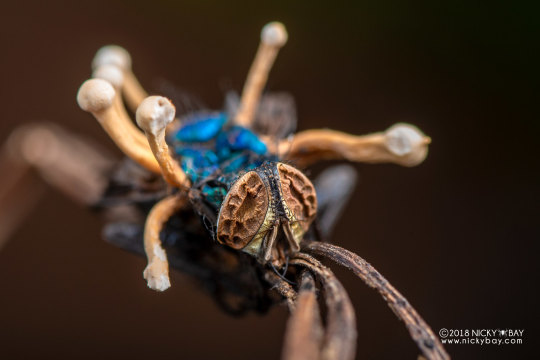
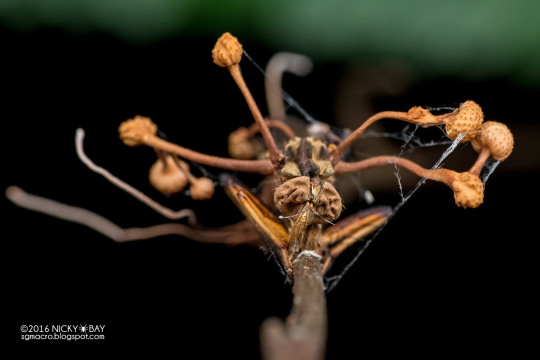





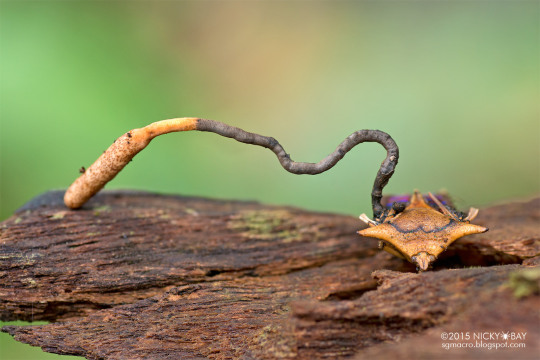

#animals#curators on tumblr#insects#bugs#arachnids#fungus#parasite#parasitism#parasitic fungus#entomopathogenic fungus#cordyceps#dead bugs#spider#true bugs#fly#wasp#ant#one nice bug#but dead this time#:(
499 notes
·
View notes
Text

Death's Head
159 notes
·
View notes
Text
please dont flop this time

#throwback to that one drawing i did that i spent like an entire day on and it got 8 notes#scavs silly misc#dark pearls#festers fuckery#bright colors#eyestrain#gore#parasitism
44 notes
·
View notes
Text
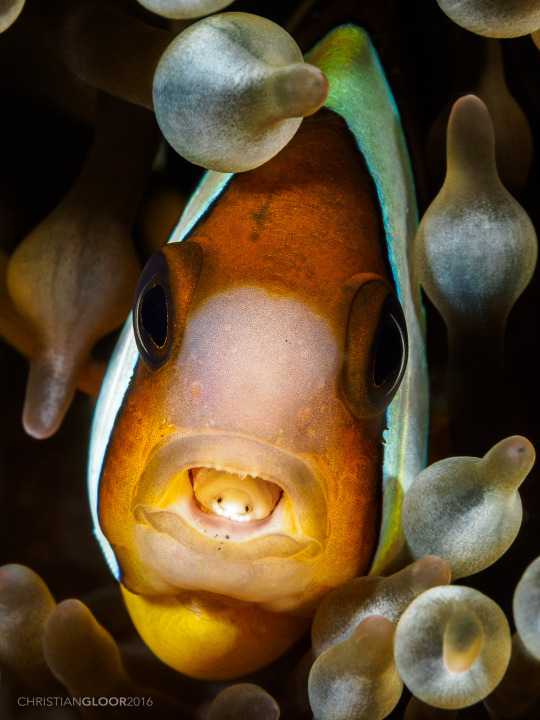
Louse got your tongue? If you’re a fish, it just might. The tongue-eating louse (Cymothoa exigua) is a parasitic crustacean. As a juvenile, it swims into the gills of fish. Once inside, it latches onto a fish’s tongue, sucking blood until the appendage atrophies or withers away. Then, the louse attaches itself to the stub that’s left behind, functionally replacing the organ. This parasite doesn’t kill its host: In fact, it may even mate with other louses while inside the fish!Photo: Christian Gloor, CC BY 2.0, flickr
356 notes
·
View notes
